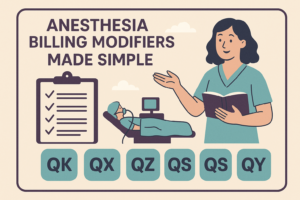If you’ve already experienced hospice billing, then you must know that it’s completely different from other healthcare specialties. You can’t rely on and take risks due to the emotional nature of end-of-life care, the complex coding requirements, and Medicare’s strict reimbursement rules. And a little detail that matters the most is called modifiers.
Modifiers in hospice billing are small codes, but their importance is huge.
They tell payers why a service was provided, who provided it, and whether it’s part of the patient’s hospice plan or not. Without them or with the wrong ones, claims can quickly spiral into denials or payment delays.
So, let’s discuss what hospice modifiers are, why they matter, which ones you should know, and how to use them correctly to ensure accurate, timely reimbursement.
What Are Hospice Modifiers in Medical Billing?
Hospice care is considered emotional care for patients with terminal illness. They usually have a prognosis of six months or less. Hospice care allows patients to spend most of their time with their loved ones. And if we talk about medical billing, then hospice modifiers have their own significance. Modifiers are two-character codes (letters or numbers) that provide extra detail about a billed service. They don’t change the actual CPT or HCPCS code but instead clarify the context, like whether a service was related to hospice care or unrelated to it.
In hospice billing, modifiers are crucial because they communicate one essential piece of information:
Is this service related to the patient’s terminal illness or not?
That single detail determines who pays — the hospice provider, Medicare, or another insurer.
- If the service is related to the terminal diagnosis, the hospice covers it under its per diem payment.
- If it’s unrelated, Medicare Part A or B may pay separately.
And that’s where modifiers become usable. They’re how you “flag” a claim properly to avoid denials and confusion.
Why Hospice Modifiers Matter for Reimbursement
Let’s consider a scenario where a patient is in hospice care for end-stage heart failure but needs treatment for an unrelated skin infection. If you bill that claim without a modifier, Medicare might assume it’s part of the hospice plan and deny payment. Now, multiply that one denial across dozens of claims every month. That’s a lot of unnecessary revenue loss and frustration as well.
Hospice modifiers ensure payers understand:
- Whether the service is hospice-related or not
- Which provider is responsible for the payment
- If the service was pre- or post-election of hospice
- If a physician were employed by the hospice or working independently
In short, modifiers keep your claims clean, accurate, and payable.
Common Hospice Modifiers and What They Mean
Let’s discuss the important hospice modifiers, what they mean, and when to use them.
Modifier GV — Attending Physician Not Employed by Hospice
The GV modifier is used when a physician, not employed or paid by the hospice, provides services to a patient who has elected hospice care. For example, a physician continues managing a hospice patient’s diabetes, which is not related to their terminal diagnosis.
When to use it:
- The physician is the attending provider but not part of the hospice staff
- Services are not related to the terminal illness
- The claim is for professional services (CPT codes)
Always ensure documentation clearly supports that the service was unrelated to the hospice diagnosis and that the physician is not employed by the hospice.
Modifier GW — Service Unrelated to the Hospice Patient’s Terminal Condition
GW modifier is used when a service is not related to the patient’s terminal illness or related conditions. For example, the patient is in hospice for end-stage COPD but needs treatment for a urinary tract infection.
When to use it:
- The service is clinically unrelated to the hospice diagnosis
- It applies to both physician and facility claims
- It clarifies that Medicare or another payer is responsible for payment, not the hospice
When both requirements are applicable, the GW modifier can be used in combination with GV like a non-hospice physician treating an unrelated condition.
Modifier GY — Statutorily Excluded Service
Regardless of hospice status, the GY modifier is applied when a service is completely uncovered by Medicare. For example, Medicare does not pay for the typical eye test given to a hospice patient.
When to use it:
- For services that Medicare explicitly excludes like some screening exams
- To make sure proper denial for secondary payer processing
The GY modifier helps to avoid misinterpretation by indicating that the practitioner was aware that the service was not covered but intentionally billed it for patient responsibility or secondary insurance.
Modifier GW vs. GV — Knowing the Difference
There’s a minor difference between GW and GV modifiers. That’s why it’s easy to mix these two up. So let’s differentiate it.
- GV is used when a physician is not employed by hospice, like a non-hospice doctor managing unrelated conditions.
- GW is used when services are unrelated to terminal illness, like any provider treating non-hospice-related issues.
In certain cases, you will utilize both GW to prove that the illness is unrelated and GV to identify the provider. For unrelated care, that comb frequently ensures the cleanest claims.
Modifier Q5 / Q6 — Substitute Physician Services
The Q5/Q6 modifier is used for locum tenens or reciprocal billing arrangements when another physician temporarily covers for the patient’s regular doctor. For example, the attending physician is on vacation, and a covering doctor steps in to provide hospice-related care.
When to use it:
- The regular physician is unavailable
- Services are furnished under reciprocal or locum tenens arrangements
- Must be billed under the regular physician’s NPI
Medicare audits love documentation, so always keep written agreements or logs of coverage periods.
How Hospice Modifiers Affect Claim Processing
Using the wrong modifier or forgetting one can completely change how your claim is processed. How do modifiers guide payers through claim routing?
- The presence of the GW modifier tells Medicare the service isn’t hospice-related, so it gets processed under regular Part B rules.
- A GV modifier clarifies that the physician isn’t on the hospice’s payroll, so payment should go directly to that doctor.
- No modifier at all? Medicare assumes the service is hospice-related, which means it’s part of the per diem payment to the hospice and not separately payable.
Incorrect or missing modifiers can trigger:
- Automatic claim denials
- Payment delays
- Post-payment audits or recoupments
And unfortunately, those denials often take weeks to appeal or lead to revenue leakage if not caught in time.
Strong Documentation: The Key to Accurate Modifier Use
Hospice billing isn’t just about choosing the right codes but it’s about proving them. Every modifier you use should be backed by clear and clinical documentation. Make sure your documentation must includes:
- The patient’s terminal diagnosis and related conditions
- The unrelated diagnosis or reason for service (if using GW)
- Provider employment status (if using GV)
- Service notes describing medical necessity
- Hospice election date and provider involvement
This level of detail ensures your claims stand up to scrutiny, especially during Medicare audits.
Top Mistakes to Avoid with Hospice Modifiers
Mistakes are common; even expert billers can make small mistakes relevant to hospice modifiers. Let’s discuss some of the most common errors and how to fix them.
Forgetting to Add GW for Unrelated Services
If you don’t attach GW, Medicare assumes the service is part of the hospice plan. And as a result, receive a denial that says the service is included in hospice payment.
To fix this error, you need to train your staff to always verify if a condition is related or unrelated before coding.
Using GV When the Physician Is Actually Employed by the Hospice
If the doctor is on the hospice’s payroll or under contract, you can’t use GV. So always check your provider enrollment details before billing and coordinate closely with hospice administrators.
Billing GY Instead of GW
The GY modifier means not covered at all, while GW means not related. Mixing them up leads to the wrong type of denial. So first confirm whether the service is excluded by Medicare or just unrelated to hospice care.
Missing Coordination Between Hospice and Other Providers
Hospice and external physicians often fail to communicate about which diagnoses are covered. You need to keep a shared list of the hospice-related and unrelated conditions for each patient. It’ll save you hours of back-and-forth.
Lack of Supporting Documentation
Even if you use the right modifier, missing documentation can still cause denials. To fix this, encourage providers to note service unrelated to hospice diagnosis directly in their encounter notes.
How Modifiers Save the Day
Let’s suppose you’re billing for a hospice patient with terminal cancer who also has diabetes.
- The hospice covers palliative cancer care — pain meds, symptom management, etc.
- The patient’s regular endocrinologist adjusts insulin levels.
If you bill the endocrinology visit without GW, Medicare will deny it because it seems related to hospice care.
But with GV (physician not employed by hospice) and GW (service unrelated to terminal illness), Medicare recognizes it’s a separate, payable service.
That’s a clean, reimbursable claim, and that shows how smart modifier use boosts your bottom line.
How M&M Claims Care Helps Hospice Providers Get It Right
As an experienced medical billing company, M&M Claims Care knows hospice billing is one of the most sensitive and complex parts of medical reimbursement. Our team specializes in making sure every modifier, every diagnosis, and every claim line is accurate because we know how easily one small error can affect revenue cycle management. Let’s show you what we do for hospice providers:
- Thorough eligibility checks: We confirm hospice election status before claims go out.
- Accurate modifier use: We flag related vs. unrelated services automatically.
- Denial prevention: Our billing audits catch missing modifiers before submission.
- Ongoing education: We keep your staff up to date on CMS updates and modifier rules.
- Clean claim submissions: Because faster reimbursement starts with fewer errors.
We don’t just process claims, we help you protect your revenue while ensuring compliance with CMS guidelines.







